Most of the commonly cultivated varieties of strawberry plants (Fragaria x ananassa) will produce “runners” as a means of propagating themselves. Anyone who grows strawberries is probably familiar with the term and, at some point, probably experienced at least a twinge of curiosity regarding them. You may have even asked yourself, “Exactly what are strawberry runners ?” Be curious no longer, for you are about to find out!
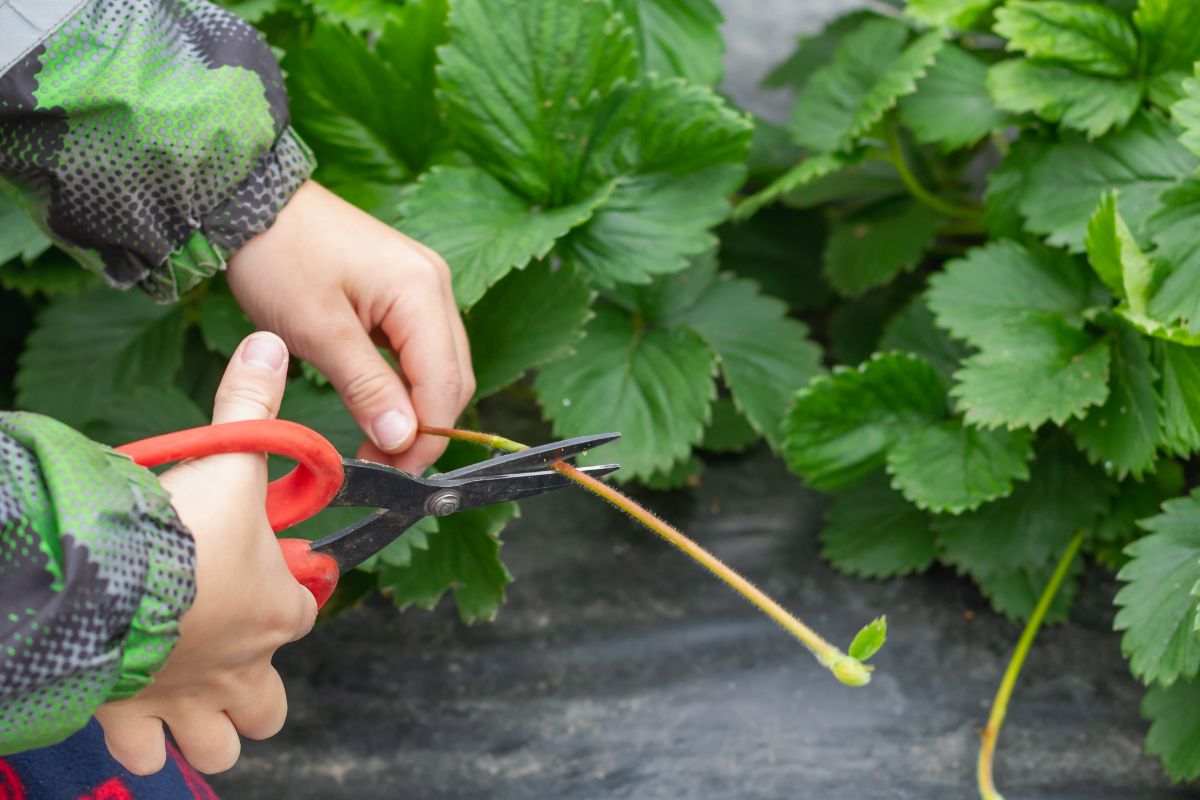
Jump to:
Background Information about Strawberry Runners
Strawberry runners are properly called “stolons.” The word “stolon” comes from the Latin word “stolo” meaning a shoot, branch, or twig springing from the root. Stolons are produced by virtually all June-bearing strawberry plants and most everbearing and day-neutral strawberry varieties. By definition, stolons are horizontal connections between organisms, and they can arise from the organism or its skeleton. Animal stolons are usually formed from exoskeletons, and are outside the scope of a post about strawberry plant runners.
Strawberry plants produce runners. These stolons are horizontal stems that run above the ground and produce new clone plants at nodes spaced at varying intervals. Since strawberry plants possess stolons, they are considered “stoloniferous.” The long, leafless stems between the mother plant, plant-growing nodes, and growing tip of the stolon are called “internodes.”
Adventitious Roots on a Strawberry Runner

Most plants have a root system that consists of a primary root or primary roots with root branches forming and growing from the primary root. Strawberry plants have this arrangement for the majority of their root system. However, they also have a special advantage: adventitious root formation at the nodes of their stolons.
Adventitious roots manifest away from the primary roots of a plant, originating instead from the stem, branches, leaves, or old and woody roots. As the name implies, this gives certain plants somewhat of an advantage over other plants. In the case of strawberry plants, they are able to propagate themselves laterally in different directions via runners to find more suitable growing locations for their clone offspring. This allows them to find better soil or areas of better sunlight.
As the strawberry plant runners are sent out, the nodes will develop the adventitious roots, sent them downward, and establish the new clone plant once contact with soil is made. Once established, the intermodal runners will dry, shrivel, turn brown, and eventually separate leaving two independent plants: the original and the clone. These special roots make it easy to start growing strawberry plants from a runner.
Benefits of Strawberry Runners
For the gardener or farmer, strawberry runners can offer significant benefits. For perennial strawberry beds, matted rows that will produce bumper crops of strawberries can be established (see the Growing Strawberries page for additional details) using only a few purchased or transplanted mother plants. This saves money as well as time (the farmer has to plant few plants!).
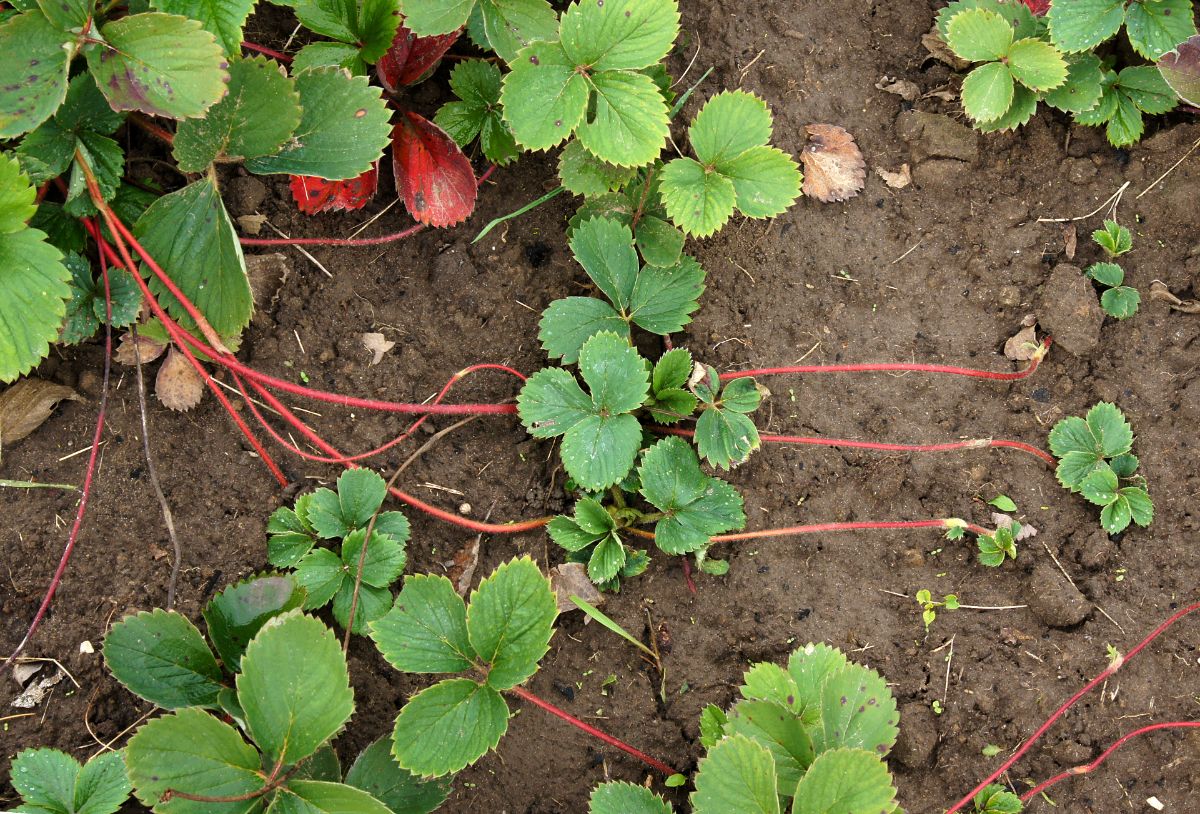
If planted in ideal conditions with regulated and appropriate amounts of water applied, most strawberry plants will produce abundant numbers of runner plants. Under ideal conditions it is not uncommon for a single plant to produce between 30 and 50 runners, depending on the vigor and qualities of the variety.
For nurseries or commercial operations, the constant production of new strawberry plants yields a return on the initial investment as the new clones are sold. A nursery or gardener can also make use of the adventitious roots. Since the strawberry plant runners are fairly flexible, the nodes can be positioned above pots, plug trays, or other growing medium. Once the root touches the soil, it will grow right where placed. Once established, the new clone plant can be separated from the mother plant and carried off in its new container, pot, or plug tray. This makes them easy to transport, sell, or re-plant elsewhere to establish a new strawberry patch.
Drawbacks of Strawberry Runners
All is not rosy in strawberry runner world, however. There are a few drawbacks to the production of strawberry plant stolons. The strawberry plants don’t understand the desires of a gardener. They only want to eat, grow, and reproduce. As such, they don’t stop sending out runners when you would like them to do so. Because of this, strawberry beds have to be thinned and renovated in order to maintain maximal production and vigor.
The prolific runner production of many of the different Strawberry Varieties also makes them somewhat invasive. Without having a dedicated area for growing strawberry plants, many cultivars will take over a garden and can choke out other plants. Runners facilitate this lateral, invasive spread.
Additionally, it takes productive energy for a strawberry plant to send out runners. The propagating energy used up in stolon production does not go into production of strawberries. Since most people grow strawberry plants for the strawberries and not the runners, it may be necessary to prune the runners so that more productive capacity is manifested in more and bigger fruits.
Strawberry Plant Runners: Conclusion
As with most things, there are positives and negatives when it comes to the runners on a strawberry plant. Should they stay and grow, or should you prune them? There is no answer that is correct for every situation. But, hopefully, you understand strawberry runners well enough now to make an informed decision that will be best for your specific cultivar and your garden!
(If all you are getting from your strawberry plants is runners and no strawberries, see this post to understand the top 10 reasons why that may be happening: Strawberry Plants Producing Runners but no Strawberries?)
Hooray for strawberry runners!

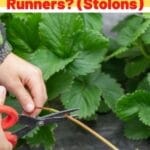
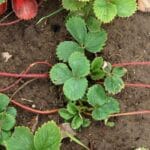
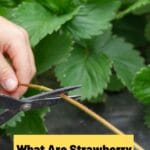

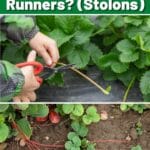
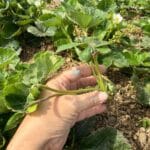
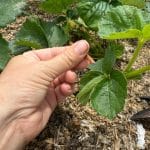

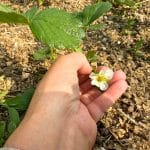
Leave a Reply